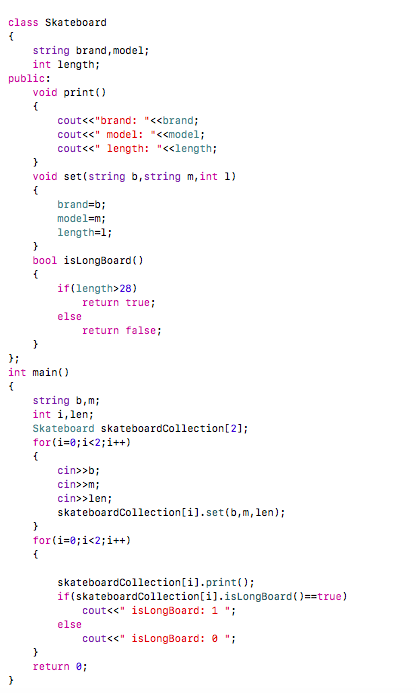

You can find the complete code in my Cop圜onstructorExample Java file on GitHub, and please feel free to give your valuable feedback. To understand it, let’s take examples of two classes-Mammal and Human-where Human extends Mammal- and the Mammal class has one field type and two constructors, one to create objects and one copy constructor to create a copy of an object: class Mammal are equal : trueĪs we can see, apart from getting the advantage of polymorphism, this option also gives us freedom for passing any argument. If we try to refer a child object from a parent class reference, we will face problems cloning it using the copy constructor. Copy constructors are not polymorphic because constructors do not get inherited by the child class from the parent class. A copy constructor is used for copying the values of one object to another object. Refer constructor overloading with example for more details with example. Yes, you are reading that right-copy constructors are not sufficient by themselves. Constructor overloading is a concept of having more than one constructor with different parameters list, in such a way so that each constructor performs a different task. Object class provides a clone method and provides support for the shallow copying.

shallow copying: shallow copying creates a new instance of the same class and copies all the fields to the new instance and returns it. In this article, I am going to discuss why copy constructors are not sufficient. Let us Assume an object- obj1, that contains two objects, containedObj1 and containedObj2. If you have read those articles, you can easily understand why it is good to use copy constructors over cloning or Object.clone().
#COPY CONSTRUCTOR JAVA HOW TO#
In my previous articles, Java Cloning and Types of Cloning (Shallow and Deep) in Details with Example and Java Cloning: Copy Constructor versus Cloning, I discussed Java cloning in detail and explained every concept, like what cloning is, how it works, the necessary steps we need to follow to implement cloning, how to use Object.clone(), shallow and deep cloning, how to achieve cloning using serialization and copy constructors, and advantages copy of copy constructors over Java cloning.

Join Simplilearn’s free courses and revolutionise your profession with certificates, specialisations, and dozens of other courses.This is the third article in my Java Cloning series. For learners, Simplilearn has made a special selection of courses available for free. To get expertise in C++ programming you can join Simplilearn’s C++ certification training course. Don’t require parent class to follow any contract or implement. Don’t require us to depend on an unknown object creation mechanism. Don’t force us to implement any interface or throw any exception but we can surely do it if it is required. In Java, we have to define this constructor explicitly. In this article you learned about stack, implementation, operations with syntax and examples. Copy constructors are better than Object.clone () because they. This is used to initialize an object using the object of the same class. A copy constructor is a constructor that creates a new object using an existing object of the same class and initializes each instance variable of newly created. When a new object is generated from an existing object as a copy of the existing object, the copy function Object () in C++ has the same name as the class it belongs to, and it does not have a return form.


 0 kommentar(er)
0 kommentar(er)
